Siân Martin interview: The love of stitch
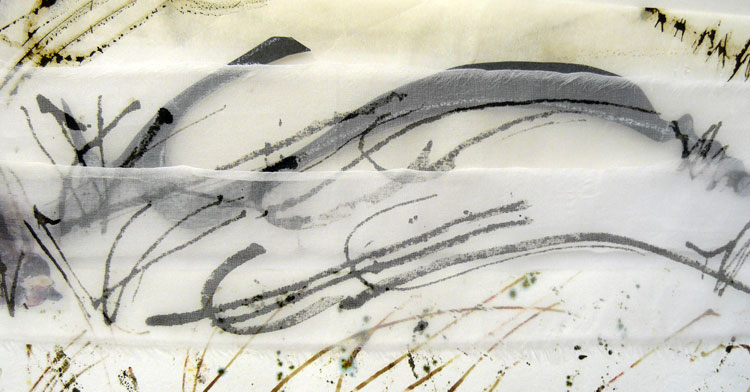
Siân Martin is an artist of many talents who studied Textiles at the University of Birmingham between 1969 and 1973. She followed in the footsteps of her mother to pursue a rewarding career in teaching the arts.
In 1991, she founded Distant Stitch, and online platform for teaching creative textile courses and workshops.
Join us for a peek at the artistry of Siân Martin, who shares the role her family played in her creative development, her passion for Distant Stitch, and her inspirations.
Seeds of my own teaching
TextileArtist.org: What or who were your early influences and how has your upbringing influenced your work?
Siân Martin: My stitching interest began in childhood, watching my mother, Iris Martin, design and make large embroidered commissions, particularly ecclesiastical pieces. Embroidered frontals, banners and pulpit falls were made for many churches and Bangor cathedral in Wales. My father acted as draughtsman to enlarge my mother’s designs to full scale cartoons, making enormous frames and helping to install them when completed. This was all part of the ‘family firm’ – Celtic Studios in Swansea – with two uncles as well as parents involved in design commissions of embroidery and stained glass. Celtic Studios became known world-wide, particularly for the stained glass designs by Howard Martin (Uncle Howard) in the ’50s and ’60s with the re-building of many churches in the UK and Europe.
Both my parents were artists so I was used to seeing a lot of art activity in the home which was fascinating to watch, and to take advantage of all the lovely tools and materials to do my own drawing, painting and stitching.
One of their projects that I particularly remember, because I was involved, was to produce a range of Christmas cards from their wood cut prints and scraperboard designs of local scenes and myths of nearby Gower, a place the whole family loved and I still visit and hold as the most beautiful coastline in the world. These designs were printed in the hundreds in black and white and dabs of colour were added by hand by my parents. My brother, sister and I were ’employed’ to help by adding the colour and learnt to apply touches with an adept flick of the wrist. I also loved packaging the cards up in neat little wrapped bundles for distribution and sale – earning my Christmas ‘bonus’.
I also remember being very interested in watching my mother prepare teaching samples for the embroidery classes she taught to the fashion students – perhaps the beginning of seeds of my own teaching career. I loved visiting her classes on a Saturday morning to wait for a lift home after my ballet class and sit in the corner quietly with my own embroidery and secretly admiring the way the students dressed and their amazing hair styles and colours. The smell of turps and oil paint reminds me still of walking along the corridors of the local art college building and the feeling of being in the most dishevelled, untidy, but most fascinating place.
What initially captured your imagination about textile art?
Perhaps it was inevitable that this would be my choice after school as the door on this world had already been opened for me and I’d seen all those lovely threads and colours.
The work is exciting and fresh
What was your route to becoming an artist?
Visits to Swansea Art College to meet parents and take a peep at the students and all the lovely things they were involved in was a good introduction to this exciting world and as I grew up, became something that would inevitably lead me to apply to art college myself.
So my route was a conventional one of starting at 17 with a ‘Pre-Dip’ foundation course at Swansea Art College then moving on to a BA Honours at Birmingham College of Art and Design, specialising in Embroidery and then an MA at the same college and finally a teaching post-grad qualification at Leicestershire Polytechnic. I started teaching art in schools to earn money and independence which gradually became less attractive as it left me no time to make my own art. Part time teaching and part time making art is a rhythm of how my life evolved which is enjoyable and full of variety.
This love of teaching has taken me around the world, leading workshops and, hopefully, inspiring the love of stitch in my students. I currently teach a distance learning course ‘Distant Stitch’ and really enjoy getting to know many wonderful stitchers from many different countries who are eager to learn and develop their designing and stitching skills. I also teach a masterclass, enjoy freelance teaching and travelling for lectures.
Two textile groups sustain and give an incentive to work to a professional level. In 1974, shortly after leaving college, I was accepted by the 62 Group. In 1995, I was invited to join the Practical Study Group, which has since been renamed the Textile Study Group.
Membership of the Textile Study Group allows me to recharge my batteries and to meet up and work collaboratively with like-minded artists in stimulating and supportive residential weekends. We are currently ‘twinned with’ a Swedish group – Textil 13 – and planning a joint exhibition with workshops in Sweden this summer.
The 62 Group provides professional opportunities to exhibit at prestigious galleries within a group of individual artists. Exhibition deadlines ensure the production of new work, and the selection process by peers for each exhibition, which all 62 group members undergo, is exciting and fresh. It encourages members to challenge themselves and push their personal boundaries. I value this very much as it is so easy to allow your horizons to slip, especially when working as an isolated artist in sleepy Somerset.
What is your chosen medium and what are your techniques?
My definition of stitch has evolved into a broad one that encompasses wrapping, threading, binding and looping as well as conventional stitch. I enjoy using thread – and anything else that could be a thread – as a three-dimensional journey, rather than as something that only appears on a surface. I love the idea of thinking of the whole route taken by a stitch as it winds its way in and out of a surface, worming its way in a three-dimensional dance. So this might explain why I like to work ‘in the air’, as it were, suspending my stitch by using threads such as wires, canes, willow and machine stitching in voids.
All this might lead you to believe that I don’t really use stitching traditionally. But I like to think that all my thread manipulations derive from a knowledge of how the thread is manipulated to form the structure of a stitch throughout history that I am honouring but re-inventing. I am still intrigued by how the simple chain stitch is formed when worked on a piece of cloth, but imagine how fascinating it is to work it across a void between two strips of cane.
How would you describe your work and where do you think it fits within the sphere of contemporary art?
What a tricky question and one I struggle to answer. I describe my work as textile art, since the 62 Group started to describe itself as such but am gradually developing the courage to drop the ‘textile’ part of this description. Although I find it odd that I still like to call myself an embroiderer. I appreciate that every artist works with a medium that they skilfully use to express ourselves so perhaps we all need a certain element of ‘craft skills’ in order to be able to handle our medium to make our art. Perhaps aligning myself to the textile world suggest that the textile medium itself has a greater importance than the message within the work and I do love handling and working with different materials, but also hope they express a thoughtful message too, so I leave it to others to place me within an appropriate sphere of contemporary art.
Wearing my artist’s hat
Tell us a bit about your process and what environment you like to work in.
Thinking, research, thinking, making notes, sketch drawings, more thinking, exploratory drawings – yes on paper, to get the ‘thinking’ out of my head and in front of my eyes so I can do more thinking and writing of notes!
I have got into the habit recently of working initially into a tiny note book, then onto bigger sheets of paper. I spread a selection of these onto a large whole-wall pin board along with previously made drawings and samples that seem to make a connection with the new ideas. My father always said you only do one piece of work in your life time – just fine tuning and developing it over the years. As you do about the wise words from a parent, I used to think that was ridiculous – but not now as I’m finding a more consistent story that I am enjoying. So I can see value in the recurring thought and I start a new piece of work by re-building, removing, and adding to my pin board wall with a collection that I feel will trigger the first thinking stages of a new piece of work.
My own studio space that has two very different halves; one with computer and filing cabinet where I wear my teacher’s hat as I talk to all my lovely online students of Distant Stitch and the other end of the room that looks out onto a peaceful back garden, surrounded by shelves of materials and my whole wall pin board is a place I go to to work wearing my artist’s hat.
Do you use a sketchbook?
I am currently working in a very small sketchbook as I find it easy to carry around with me and has an immediacy of recording fleeting ideas – quick marks and notes that occur without it turning into an art book. When wishing to take some of these marks forward, I turn to much larger sheets of paper that give me the freedom to enjoy the physical act of drawing, using a range of drawing media, although my favourite is a bottle of black ink and a selection of drawing ‘tools’ like sticks, a candle and large paint brushes. These larger drawings are stored in a plan chest drawer or portfolio – with a few selected pieces finding their way onto the wall to take me onwards to the next stage of thinking and playing.
What currently inspires you and which other artists do you admire and why?
- Movement and rhythm, transparency, networks and lace structure. Although I visit exhibitions and galleries such as the Tate, rarely does a textile one attract me, tending to avoid embroidery specific exhibitions, so I’m a bit of an embroidery hermit. The last exhibitions to really excite me was the etchings of Georgio Morandi and Drawn in the Royal West of England Academy of Art – RWAA.
- Rebecca Crompton, for her adventurous spirit and courage to break new ground in design and using non-traditional materials in the world of embroidery. And for her inventive use of the straight stitch sewing machine to do a zigzag stitch.
- Grayson Perry, for his lucid way of communicating that inspires artists as well as non-artists.
- Peter Collingwood, for his knowledge and fascination with all the ways in which a continuous thread can be used to make a textile.
- Matthew Harris, for the sense of rhythm in his work, his development of his individual making process and his seemingly contrary use of serendipity and chance.
Tell us about a piece of work you have fond memories of and why.
The first piece is ‘To Warm the Cockles of your Heart’ which uses one of my mother’s designs as a repeated print motif as a ground for my own stitching and manipulating. The combination of my mother’s work and mine was a warming piece to do shortly after her death when I was looking at her vast collection of artwork that perhaps I hadn’t fully appreciated until then.
This design shows the strong graphic style that was so characteristic of her designs and the period in which she was most prolific, in the 1940/50s. It also tells the story of the age-old tradition of gathering cockles and laver on the north Gower coast to sell in Swansea Market.
The printed fabric was made into a 3D surface using a shibori method I learnt during a research trip to Japan. This involved tying small shapes, cockle shells in this case, into the fabric and, after a short steaming, the shapes are removing, leaving behind a fabric surface that retains their forms as permanent 3D shapes.
My second choice is ‘Fanfair’ which seems, in hindsight, to have been the start of working with ideas of suspension and construction methods. Images of ‘Fanfair’ were widely publicised so that people thought I had made a whole series. There is just the one that currently hangs and sets the colour scheme for my lounge with its strong acid yellow. It’s story was inspired by Dickens’ Miss Haversham, dressed in rotting lace, sitting at her abandoned cobwebbed wedding feast. A fine cobweb of machine stitching on soluble fibre holds wrapped art straws and trapped fabric fragments.
My third choice is ‘Tread Softly’ which is a long, meandering floor piece which shows a family of fragile foot shapes on an even more fragile path of paper fragments machine stitched together. I recycled some of the mass of papers accumulated by my parents over sixty years of living in the same house into this piece, making a three metre long path shape. The paper feet were placed carefully between the stitched flower footprints along the path. All symbolic of man’s footprint on the planets.
Footsteps across a path of tiny fragments assembled with stitch refer to a quote from the poem by W B Yeats, ‘He Wishes for the Cloths of Heaven’.
“I have spread my dreams under your feet;
Tread softly because you tread on my dreams.”
To work more spontaneously
How has your work developed since you began and how do you see it evolving in the future?
An enjoyment in drawing has freed up my ideas and given me a confidence to work more spontaneously with materials. I have also developed the challenging enjoyment of using materials that I don’t find easy to control and learning to adapt to work with their limitations instead. This has meant a huge opening up and relaxing of my ideas from the specific control to working with chance. I have discovered the joys of using non-textile materials such as paper, vellum, straws and recently willow and cane, both products of Somerset, my adopted home area.
As an example, Empty Nest, although evolved from a fragile, transparent, baby’s bonnet in the Museum collection, was so worn that only the seams had survived. The combination of the two elements of fragility and strength suggested a fluid piece made from a continuous curved length of white willow and the disintegrating lace consisting of machine-stitched pages from one of my old school sketchbooks.
The swooping ballet of birds preparing to roost against the winter Somerset wetlands sky is the inspiration for the piece entitled ‘Murmuring’. A series of drawings to capture the linear rhythms of this spectacle informs the gradual crescendo continued by the natural curve of the wrapped cane forms. This wall hanging is a series of eight pieces that together measure 60 cm x 220 cm x 30 cm.
What advice would you give to an aspiring textile artist?
- Become proficient and skilled in your chosen medium and find your own voice.
- Keep challenging yourself and don’t resort to easy options.
- Show your work to others and find other artists with whom you feel comfortable to share ideas, experiences and exhibit with – they don’t have to be textile artists.
- Walk and think a lot and give yourself time to explore without the pressure of that exhibition date.
Can you recommend 3 or 4 books for textile artists?
- ‘Textile and Weaving Structures’ by Peter Collingwood
- ‘Modern Design in Embroidery by Rebecca Crompton
- ‘Encyclopedia of Needlework by Theresa de Dillmont
- ‘Drawing Projects – an exploration of the language of drawing’ by Mick Maslen and Jack Southern
What other resources do you use?
What piece of equipment or tool could you not live without?
It has to be the sewing machine.
Do you give talks or run workshops or classes? If so, where can readers find information about these?
My online Distant Stitch courses have been running successfully for over twenty years. Many students have earned City and Guilds qualifications by working through their Modules downloaded from my website. I give individual feedback to several students each day through their blogs which show me all their fascinating work as they progress through their course. A special annual treat for me and any others who can join in the Summer School held at Farncombe Centre in the Cotswolds.
Workshops and lectures – a few are mentioned on my website and I’m happy to extend and develop new ones to suit any interested group. I love sharing the methods that interest me to share and give students a glimpse of how I work and what excites me.
I mentor a group of Stitch Textile Artists on two residential weekends a year at Ammerdown Centre, Radstock, near Bath. These are a group of enthusiastic people who have completed more formal textile and embroidery qualifications and wish to be extended and stimulated even further, working together with like-minded artists. This is such an inspiring group to work with and I find the sharing of ideas goes both ways. We exhibit together and our next exhibition, ‘On the Edge’ will be held at Ilminster Arts Centre, Somerset between 27th July and 8th August, with a ‘Meet the Artist’ event on 1st August.
How do you go about choosing where to show your work?
I am very committed to exhibiting with the two textile art groups mentioned earlier plus Stitch Textile Artists.
Where can readers see your work this year ?
- 62 Group – NOW – Upfront Gallery, Penrith, Cumbria – 17th March – 10th May 2015
- Traces of Life – A joint exhibition of Textile Study Group & Textil 13 – Dalarnas Museum, Sweden – 12th of June – 13th of Sept 2015
Want more information? Please visit: www.stitchloop.blogspot.co.uk


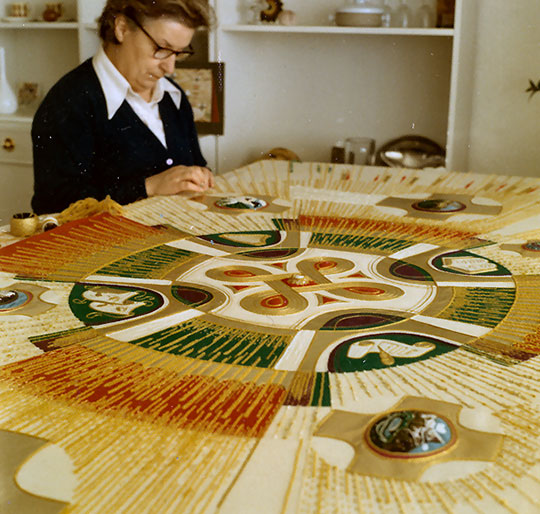
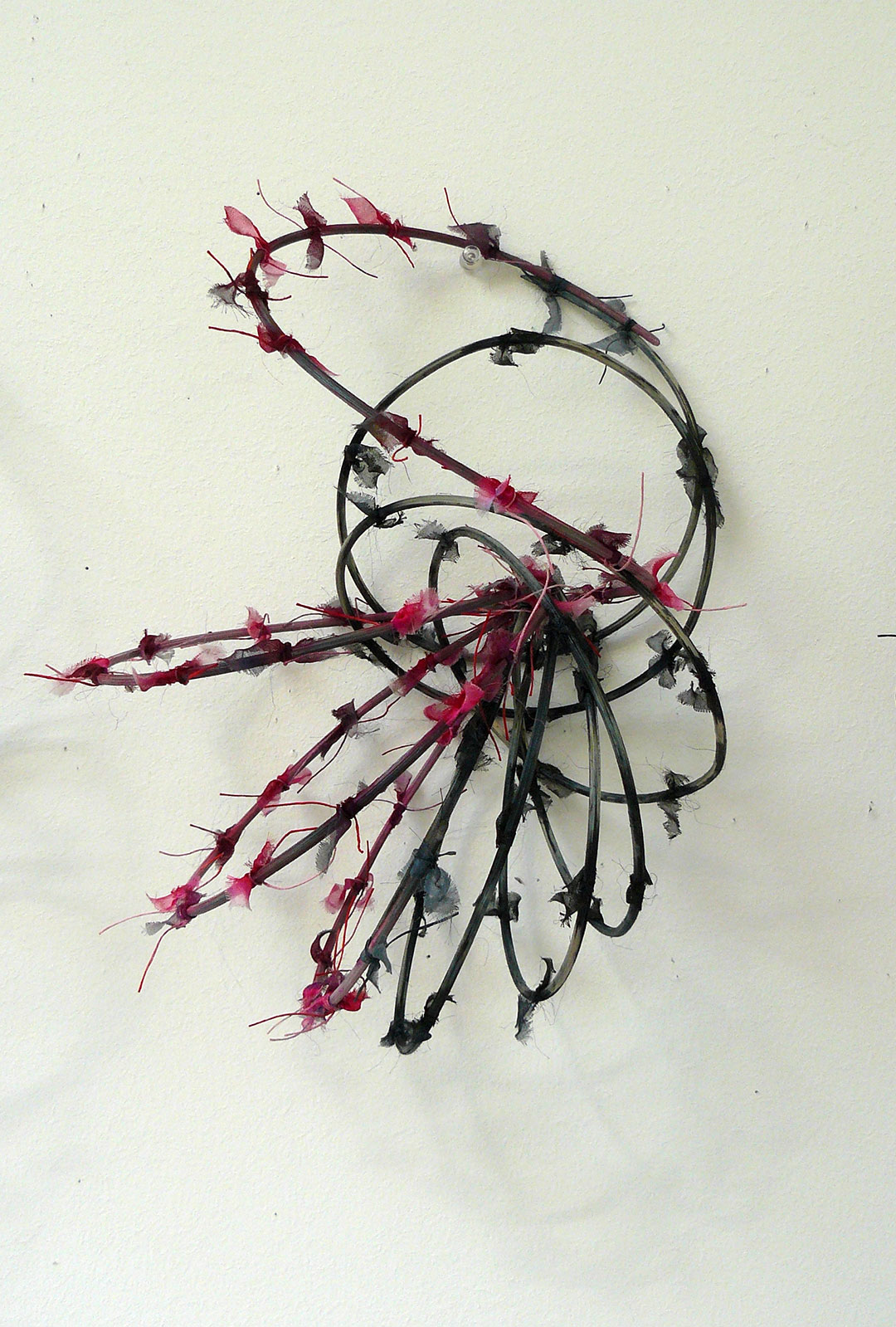
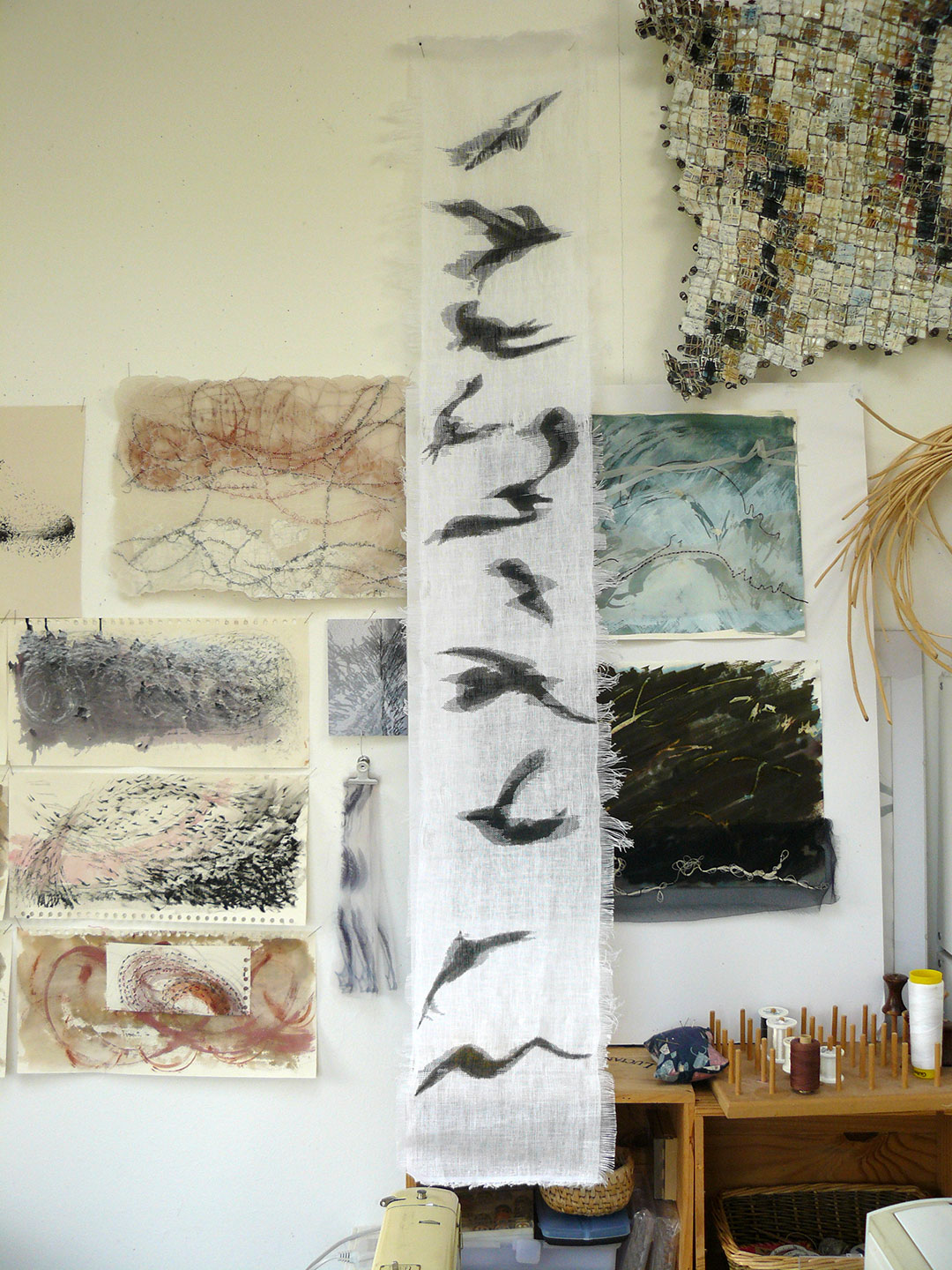
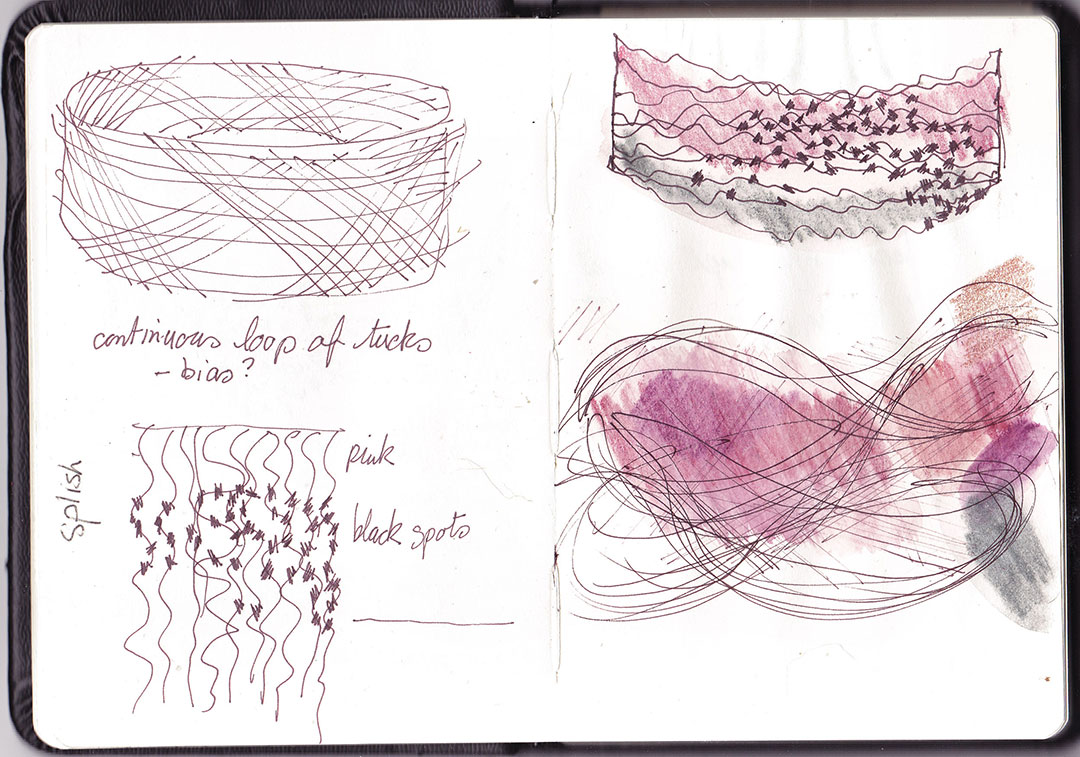
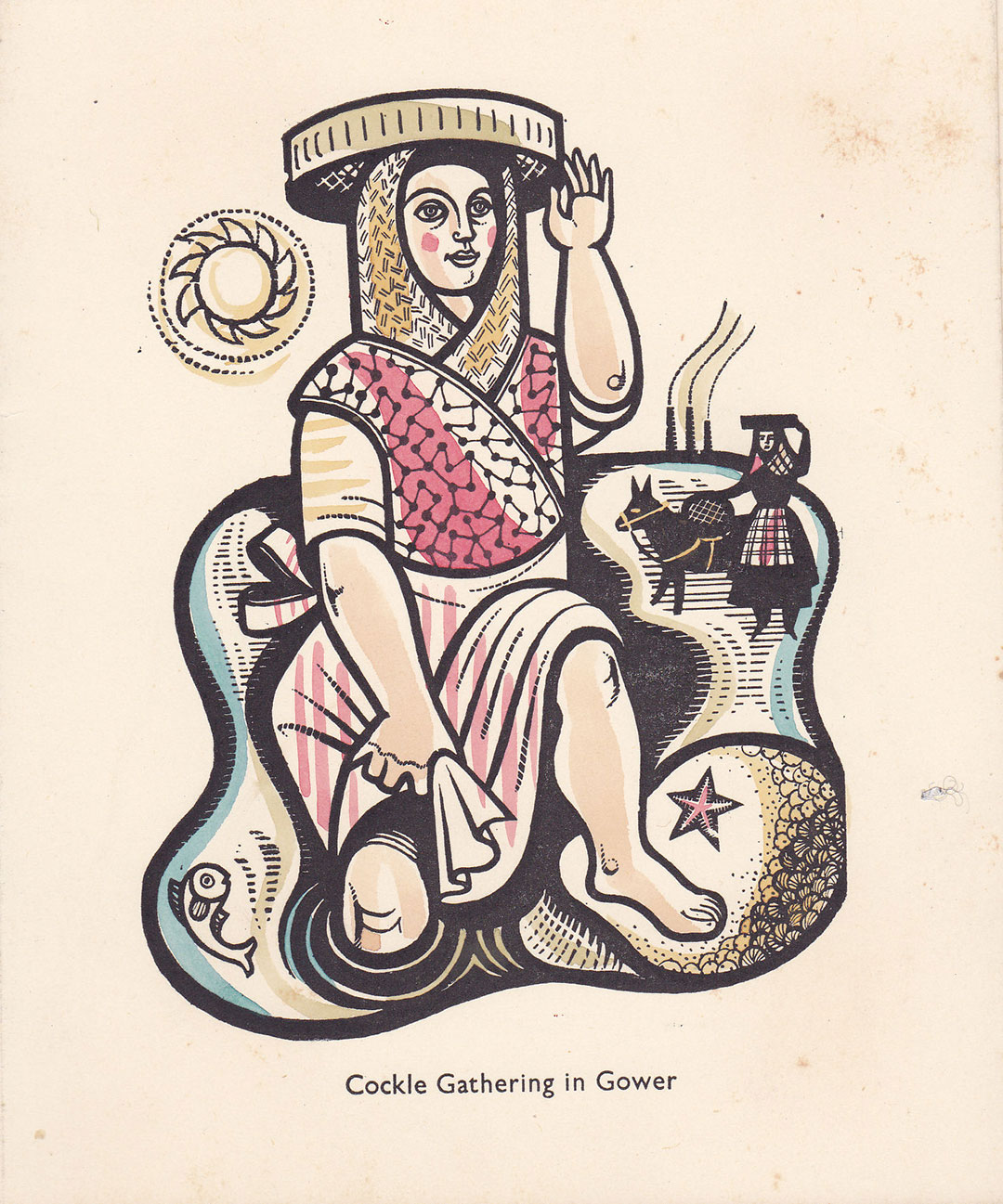
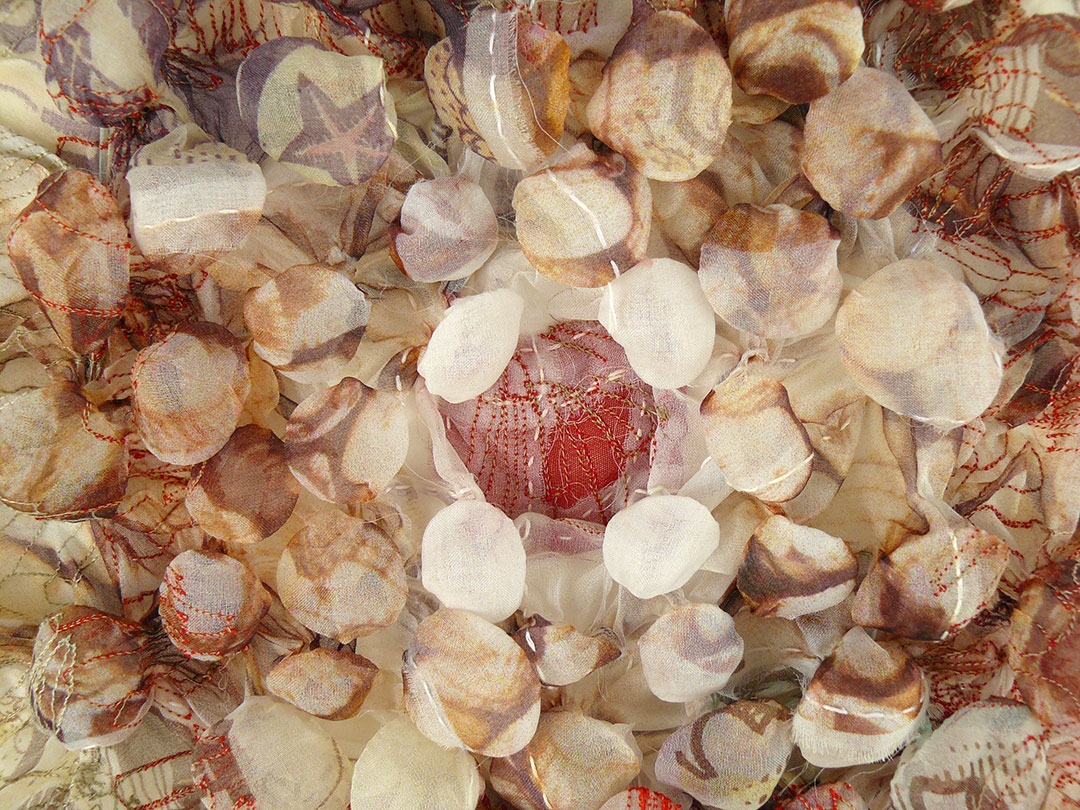
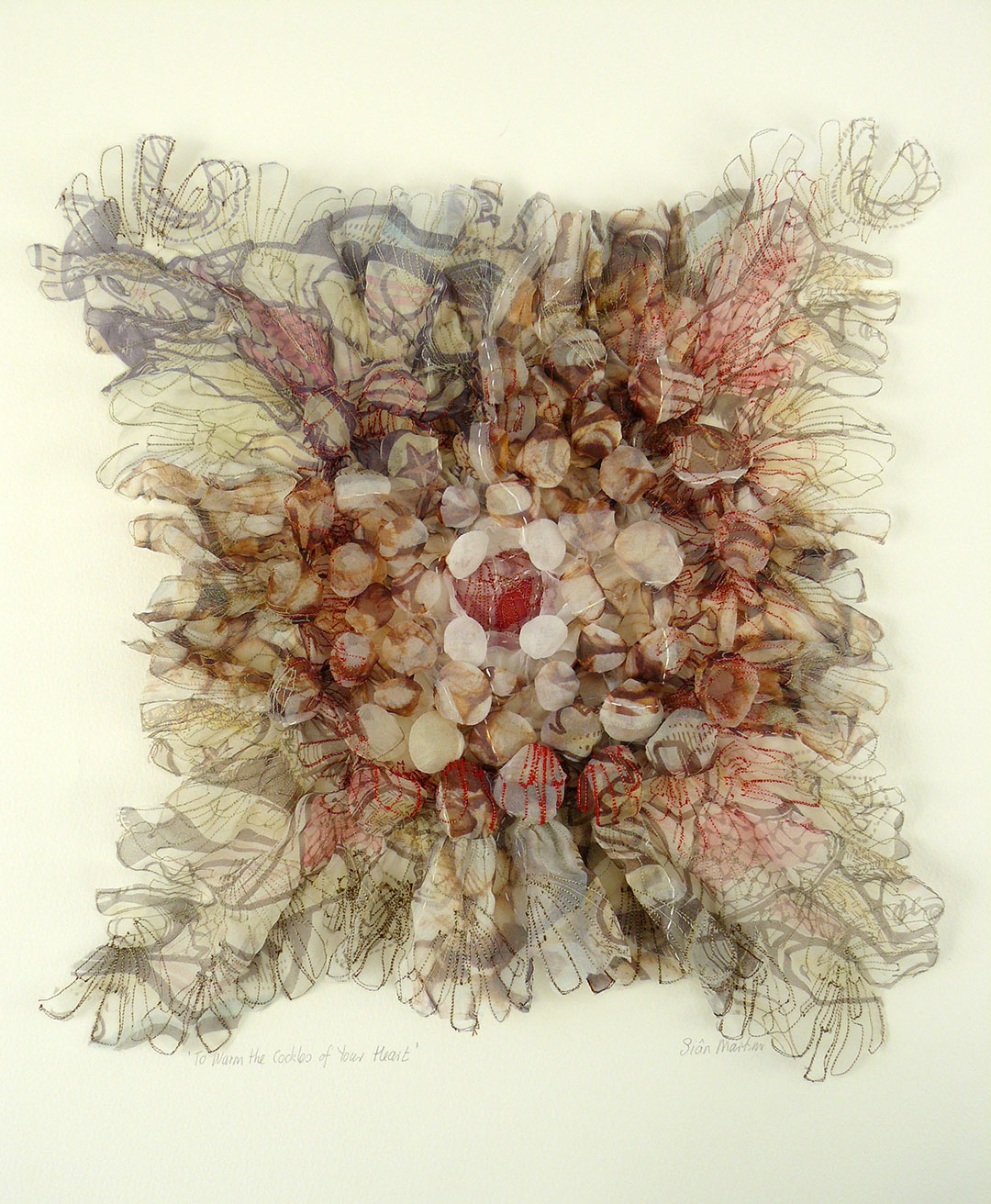
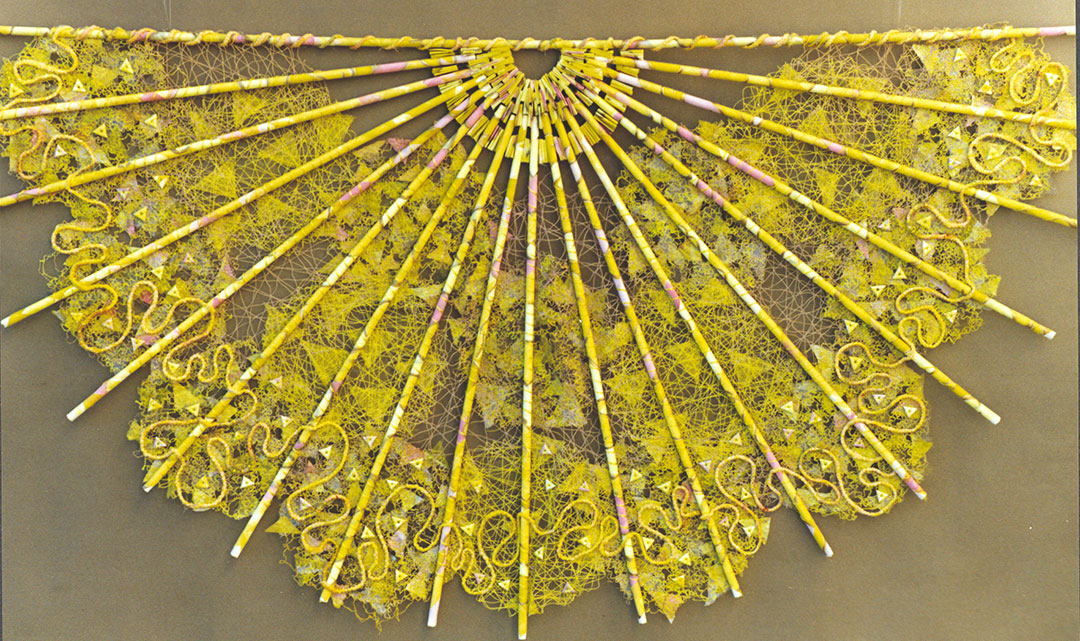
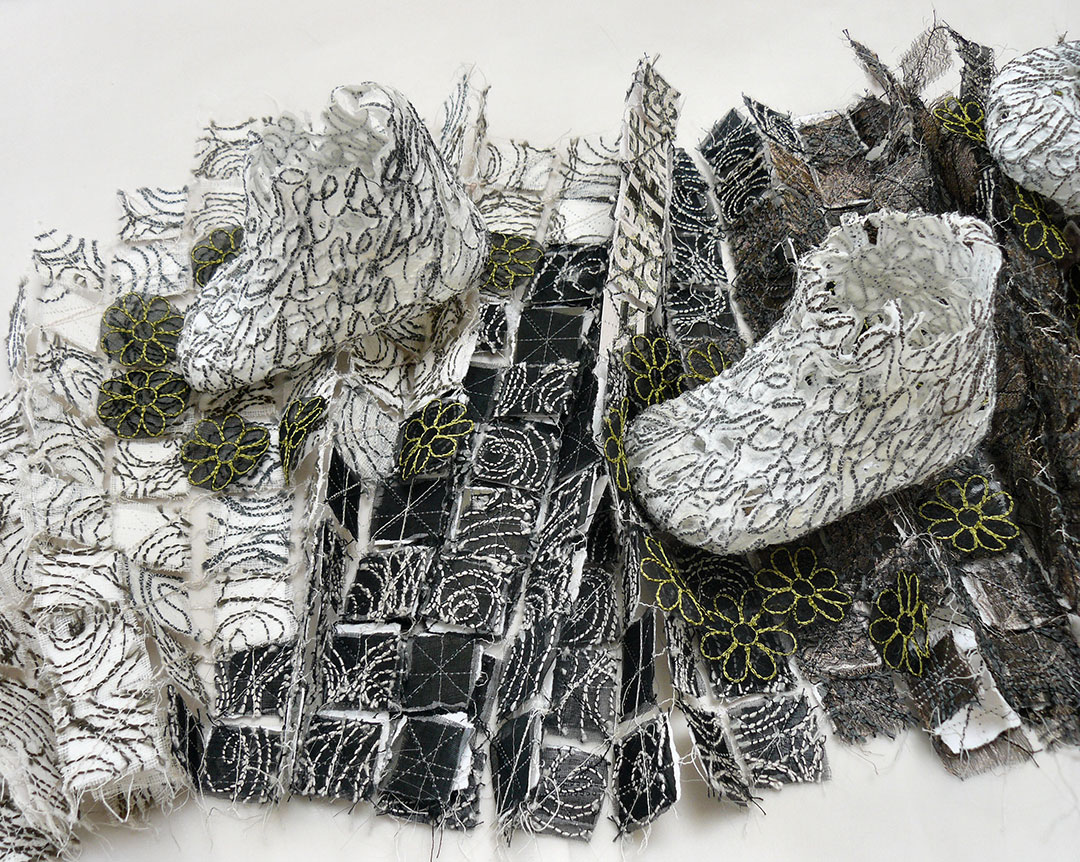















Fabulous to see your work here Sian. The students on your courses benefit form such great teaching but is is rare to see such a wonderful insight to your work. It has always been a privilege to work with you
Casx
Thank you for your message Cas. Good luck with your new book and your trip to Australia. You’ve been very busy recently! x
Great to read about you here Sian, you probably wouldn’t remember me specifically, but you taught me whilst I was at SCAT doing BA (Hons) Fashion Textiles. You were one of our most inspirational lecturers being a practicing designer/artist and I was always inspired by your most beautiful sketchbooks!
Sarah 🙂
Thank you for leaving me a message Sarah. Lovely to hear from you. Are you still involved in the world of textiles?
If you’re on Facebook, perhaps we can keep in touch?
I would like to know what media you used in your pieces that are more to do with the urban/ movement theme and why ,as this would help in my research about you and your work for my project